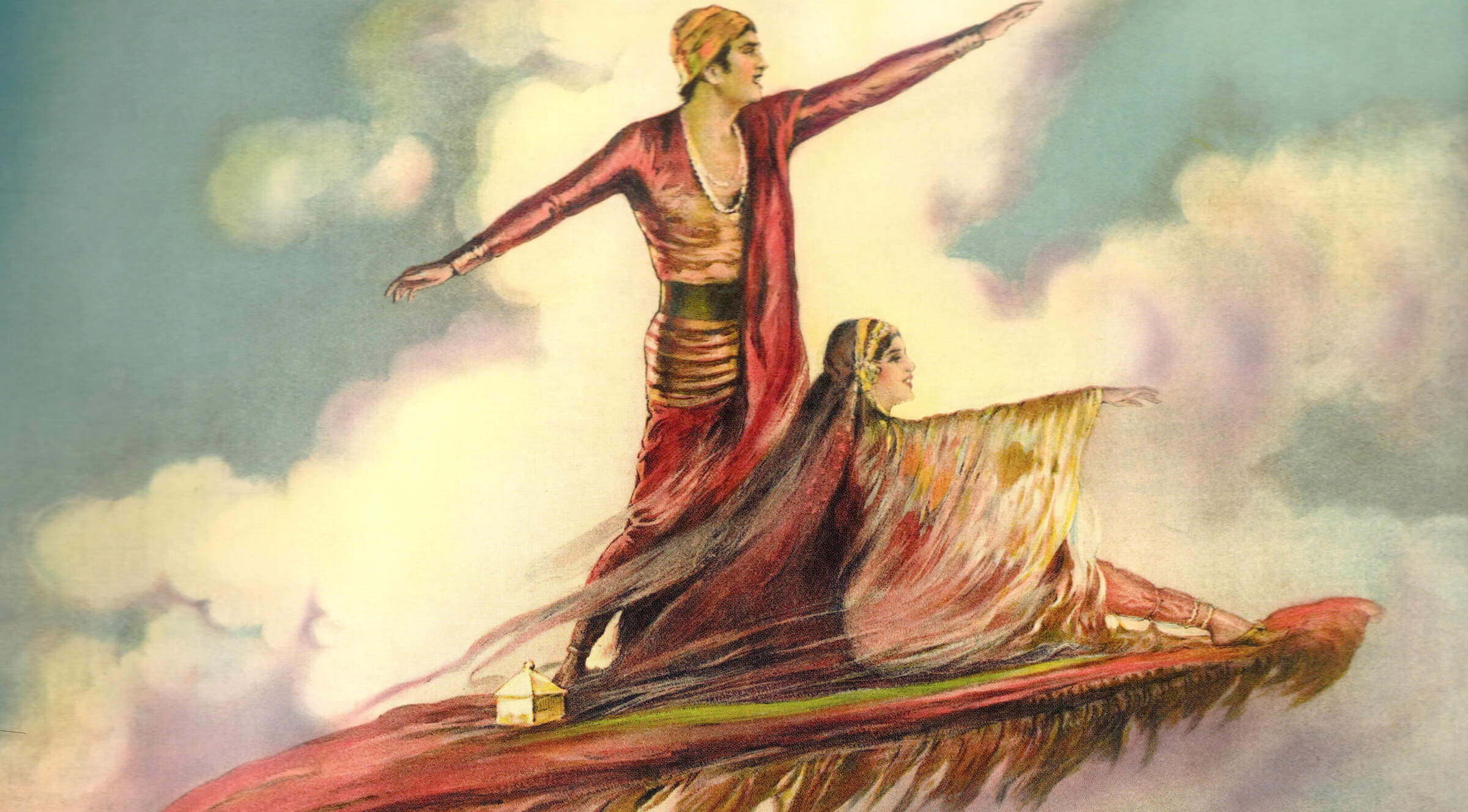This feature was published in conjunction with the screening of The Thief of Bagdad at Silent Winter 2013
Among the wonders of The Thief of Bagdad are the mechanical and special effects created by Hampton Del Ruth and Coy Watson, under the supervision of the film’s technical director, Robert Fairbanks, brother of star and producer Douglas Fairbanks. Watson, who began his film career as a cowboy and worked as a props man in Mack Sennett’s early Keystone comedies, was one of the first special effects artists in Hollywood. He helped to invent breakaway glass made of sugar and found numerous uses for strong, thin piano wire in stunts and gags, earning him the nickname “Fire, Wire and Water Watson,” according to an affectionate memoir by his son Coy Jr. (one of several of Watson’s nine children who became child actors).
The most impressive effect in The Thief of Bagdad is the flying carpet. Director Raoul Walsh took credit for the idea in his own memoir, claiming he thought of it when he passed a construction site and saw some construction workers riding a load of girders being hoisted up by a large crane. But it was Watson and his trusty piano wire that executed it. According to film historian Jeffrey Vance, the crane was 90 feet high with platforms for the camera operators. The carpet was a flat piece of steel covered in a Persian carpet with long fringe to conceal the platform. Six sets of sturdy wires were attached to the frame and held up by the crane. Each set of wires could hold 300 pounds. An overhead pulley and a hand winch, just off camera, lifted the carpet and moved it at about 25 miles an hour, a brisk speed. Undercranking the cameras made the carpet appear to be moving even faster. The film’s finale, with the carpet flying out of the palace, into the city, and off in the clouds, was shot with 18 cameras simultaneously covering all the angles and all the action.
The close-ups of Fairbanks and Julanne Johnston (who played the princess) on the carpet were shot against a blank screen and double-exposed on a background of clouds. The same effect was used for the flying horse scene, with a real horse running on a treadmill against a screen. The wings were attached and moved by wires, and Fairbanks was double-exposed in. Piano wire also held up the magic rope that Fairbanks climbs and manipulated the giant spider’s limbs. The film’s special effects were so innovative that Science and Invention magazine published a two-page spread, “The Mechanical Marvels of The Thief of Bagdad” in May of 1924.
While the famously fit Fairbanks—who exercised every day at a gym on the lot, which had a sign reading “Basilica Linea Abdominalis” (Waistline Temple)—performed his own stunts, he did get a bit of help. In an early scene where he dodges pursuers by jumping in and out of a series of large jars, the jars had trampolines inside, allowing him to make those spectacular leaps. When he rides a bucking horse and is tossed into the rosebush, he wore a belt attached to wires with which Watson pulled him off the horse and catapulted him neatly into the bush. Watson told his son that when Fairbanks was attached to the wires, “He liked to clown, pretending to fly and do impossible gymnastic tricks as he swung himself through the air. This caused Dad concern and he often had to remind Doug that he was not rigged to do circus stunts and he was playing without a net below!”
Two years later, Fairbanks again tapped Coy Watson to help with special effects on The Black Pirate, creating another memorable Fairbanks moment, his slide down the sail of a ship. Again, with a little help from some piano wire.

